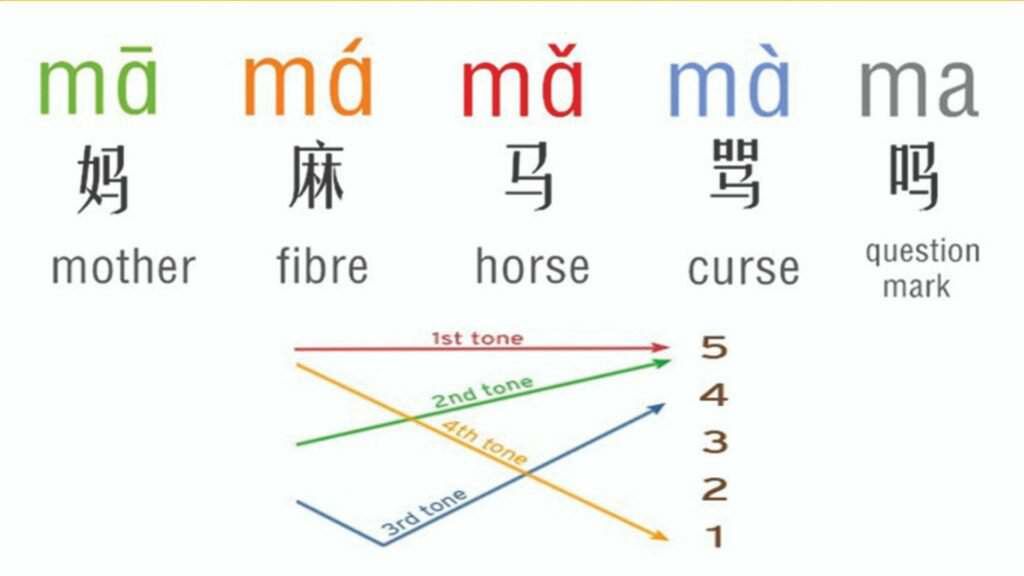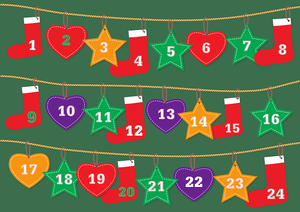The Four Tones in Mandarin Chinese
Dive into the essential guide to mastering the four tones of Mandarin Chinese, designed for language learners seeking to improve their pronunciation and fluency

The Four Tones in Mandarin Chinese
Imagine stepping into the vibrant streets of Beijing, the air buzzing with conversations, laughter, and the melodic rhythm of Mandarin Chinese. You're not just surrounded by a new landscape, but by a language where every sound, every inflection, can unveil a different story. This is where the magic of tones in Mandarin Chinese comes to life, a fundamental element that can transform your journey and your connection with the people you meet.
Embark on a linguistic journey through the heart of Mandarin Chinese with our enlightening article on the four essential tones that define this rich and melodious language. Discover the intricacies of the high and level first tone, the rising melody of the second, the dipping contour of the third, and the sharp fall of the fourth tone. Through detailed explanations and vivid examples, we'll guide you on how to distinguish, pronounce, and practice these tones, each a crucial step toward fluency. Whether you're a curious beginner or looking to refine your pronunciation skills, this article serves as your comprehensive guide to mastering the tones of Mandarin Chinese, unlocking the doors to effective communication and deeper cultural understanding. Join us as we unravel the mysteries of Mandarin tones, paving your way to linguistic competence and confidence in your language learning journey
I. Introduction to Mandarin Chinese Tones
The Importance of Tones in Mandarin Chinese
In Mandarin, tones are not just musical accents added to your speech; they are the soul of the language, the crucial difference between saying "mother" (妈, mā) and "horse" (马, mǎ). Imagine asking for directions to the museum but accidentally expressing love for horses instead. While it might lead to a humorous exchange, understanding tones ensures your adventures are filled with meaningful conversations rather than confusing mix-ups.
A Brief Overview of the Tonal System
Mandarin Chinese is painted with four primary tones and one neutral tone, each a different brush stroke that alters the meaning of a word. The first tone is steady and high, a smooth sailing across calm waters. The second tone rises, like a question waiting to be answered or the anticipation of a journey's beginning. The third tone dips then rises again, like the path winding up a mountain then down into a serene valley. The fourth tone is decisive and falling, like the sun setting after a day of exploration. And then, there's the neutral tone, light and without emphasis, the soft ending to a day's adventure.
The Role of Tones in Distinguishing Meaning
Tones in Mandarin are not just about pronunciation; they're about painting pictures with your words, where changing the tone changes the scene. It's what makes the language so beautifully complex and rich with meaning. For travelers, mastering these tones is like holding a key to unlock deeper connections and richer experiences. Whether you're ordering your favorite dish or sharing a moment with new friends, the correct tone can turn simple phrases into bridges between cultures.
Imagine the joy in a local's eyes when you compliment their city's beauty with the right tone, the laughter shared over a slight mix-up that turns into a memorable story, or the warmth of a conversation that flows effortlessly because you took the time to understand the melody of Mandarin. These are the moments that illuminate the importance of tones, transforming your journey through China into an unforgettable symphony of cultural exchange and personal growth.
So, as you embark on your adventure, remember that tones are your companions in every interaction, guiding you through the tapestry of Mandarin Chinese, enriching your travels with every word you speak.
II. Understanding the Four Tones in Mandarin Chinese
First Tone: The High-Level Tone
Picture the first tone as the steady, unwavering line of the horizon at dawn. It's high and flat, like a gentle but firm hand guiding you across the vast landscapes of China. It doesn't rise or fall; instead, it remains constant, offering a sense of stability and calm in the sea of linguistic nuances you're about to navigate.
How to Produce the First Tone
To master the first tone, imagine holding a note in a song, keeping your voice even and your pitch high. It's like the calm confidence of a seasoned traveler gazing out over the Great Wall, their voice steady against the wind. There's no question, no dip, just the pure, unchanging line of sound. Try it with a simple "ah," letting the sound stay smooth and level from start to finish.
Examples of Words Using the First Tone
The beauty of tones becomes apparent when you start attaching them to words, turning abstract sounds into concrete meanings. Take "mā" (妈), meaning "mother," a word that carries the warmth and love of home in its unwavering tone. Or "shū" (书), which means "book," a gateway to knowledge and adventure, its tone as steady as the stories that lie within its pages.
Each of these words, "mā" and "shū," is a world of its own, wrapped in the simplicity and steadiness of the first tone. They're not just sounds; they're invitations to explore deeper, to connect more profoundly with the culture and people of China. As you practice, imagine each word as a step on your journey, with the first tone as your guide, leading you with confidence and clarity.
Second Tone: The Rising Tone
Imagine standing at the base of a magnificent mountain, your gaze lifting upwards towards the peak that touches the sky. The second tone embodies this ascent, a voice that starts at a comfortable middle pitch and climbs to a higher note, filled with questions, wonders, and the thrill of discovery. It's the sound of curiosity, of open doors and new horizons waiting to be explored.
How to Produce the Second Tone
Producing the second tone is like the feeling of your heart lifting when you catch the first glimpse of the Great Wall snaking over the hills or the Terra Cotta Warriors standing guard through the ages. Start with your voice at a neutral point, then let it rise, smoothly and steadily, like a kite catching the wind. It's a tone that breathes life into words, turning them into invitations for adventure and connection.
Examples of Words Using the Second Tone
In the fabric of Mandarin, words wrapped in the second tone carry a vibrancy that beckons for attention. Take "mái" (买), meaning "to buy." It's not just a transaction but an interaction, an exchange of smiles and stories as you purchase a keepsake from a local market. Or "hái" (还), meaning "still" or "also," a word that adds layers to your stories, connecting past adventures with the promise of those yet to come.
Each of these words, "mái" and "hái," is a bridge to experiences that enrich your journey, painting your travels with the colors of curiosity and eagerness. The second tone, with its rising melody, invites you to look beyond the surface, to engage deeply with the culture and people you encounter, turning every moment into an opportunity for discovery and wonder.
Third Tone: The Falling-Rising Tone
Imagine the path of a dragon, descending into the depths of ancient myths only to rise again, powerful and majestic. The third tone captures this essence, starting with a descent in pitch, a moment of reflection or anticipation, before rising towards an unseen horizon. It's the tone of transformation, of valleys and mountains in both the landscape and the human heart.
How to Produce the Third Tone
To find the rhythm of the third tone, think of the gentle ebb and flow of the Yangtze River, carrying stories of past and present. Begin with your voice higher, let it fall softly, like the sun dipping below the horizon, then lift it again, rising with the promise of dawn. This tone is a journey, an emotional voyage that adds depth and texture to your words, turning simple sounds into narratives.
Examples of Words Using the Third Tone
Words wrapped in the third tone are like treasures waiting to be uncovered, each carrying its own story. Consider "měi" (美), meaning "beautiful." In this tone, it's not just a description but an experience, a reflection of the awe that washes over you as you stand before the breathtaking vistas of Guilin or the serene beauty of West Lake.
Then there's "hǎo" (好), meaning "good" or "well." Encased in the third tone, it becomes an affirmation of life's many wonders, a positive note resonating through your interactions, whether you're praising a delicious local dish or the kindness of a new friend.
Each word, "měi" and "hǎo," carries the essence of the third tone's journey, inviting listeners into a narrative of beauty and positivity. They remind us that language is more than communication—it's a bridge to understanding, a way to capture and share the depth of our experiences.
Fourth Tone: The Falling Tone
Picture the majestic descent of a waterfall, cascading with power and grace from the heights. The fourth tone captures this essence—a confident, sharp decline from high to low. It's the tone of declarations and decisions, a sonic embodiment of the Great Wall's fortitude stretching across China's landscapes. In this tone, words are not merely spoken; they are proclaimed.
How to Produce the Fourth Tone
Producing the fourth tone is like striking a drum, a resonant beat that leaves no room for doubt. Start with your voice at its highest register, then let it fall swiftly and firmly, like an eagle swooping down from the sky. It's a tone that demands mastery of both breath and conviction, turning each word into a declaration.
Examples of Words Using the Fourth Tone
Words enunciated with the fourth tone carry weight and authority. Take "bù" (不), meaning "no" or "not." In the fourth tone, it's a clear, unambiguous boundary, a statement of dissent or correction. Or consider "shì" (是), meaning "is" or "are," the bedrock of stating facts and truths, as solid and unyielding as the mountains that rise in the distance.
These words, "bù" and "shì," are more than vocabulary; they are the expression of your will and understanding, tools to navigate the complexities of communication and interaction. With the fourth tone, you convey not just information but conviction, crafting messages that resonate with clarity and strength.
III. The Neutral Tone
Explanation and Characteristics
The neutral tone is the soft footstep following the bold strides of the first, second, third, and fourth tones. It's characterized by its brevity and lightness, a fleeting presence that barely touches the ear before it's gone. Unlike its more pronounced counterparts, the neutral tone doesn't rise, dip, or fall. Instead, it offers a moment of rest, a breath in the middle of a sentence, giving rhythm and balance to the spoken word.
How It Differs from the Four Main Tones
Imagine the four main tones as the vibrant colors of a painting, each one adding depth, emotion, and clarity to the scene. The neutral tone, then, is the blank canvas upon which these colors come to life. It's the pause between notes in a song, allowing the melody to resonate more fully. While the first four tones demand attention, changing the meaning of words with their varied pitches, the neutral tone asks only to be felt, a subtle nuance that softens and refines the language.
Examples of Words Using the Neutral Tone
The beauty of the neutral tone is often found in its simplicity. Take "ma" (吗), for example, a particle that turns a statement into a question without the need for any other alteration. It's the difference between "You're going" and "Are you going?", where the neutrality of the tone invites a response rather than asserting a fact.
Then there's "ba" (吧), a particle that suggests suggestion or agreement, softening a command into a gentle proposition. "Let's go, shall we?" It's the linguistic equivalent of offering a hand rather than pointing the way, fostering a sense of camaraderie and mutual decision-making.
These words, and others like them, demonstrate how the neutral tone plays with the space between words, shaping the intangible atmosphere of a conversation. It's a reminder that sometimes, the most profound connections are made not in the height of drama, but in the quiet moments, the pauses where understanding deepens without the need for emphasis.
IV. Tone Pair Rules
Introduction to Tone Pairs and Their Importance
Tone pairs are like the dance partners of the Mandarin language, each step and turn dependent on the other for grace and coherence. When tones meet in the wilds of conversation, they don't simply line up one after another; they interact, each one affecting the pitch and perception of its partner. This interaction is crucial for understanding and being understood, as the melody of your speech guides listeners through your thoughts and intentions with clarity and beauty.
Why Tone Pairs Matter
Imagine wandering through the bustling streets of Shanghai, the air alive with the music of Mandarin. In this symphony, tone pairs are the rhythm section, keeping time and pace. They help distinguish between phrases that might otherwise sound similar, turning a potential cacophony into a harmonious dialogue. Mastering tone pairs means unlocking the fluidity of spoken Chinese, enabling you to navigate social interactions with ease and confidence.
Examples and Practice Exercises
Let's explore some common tone pairs and how they come together:
• First Tone + First Tone: Both high and level, like a steady gaze across the tranquil West Lake. Practice with "māma" (妈妈, mother), letting each syllable float high and serene.
• Second Tone + Third Tone: Rising meets falling-rising, a question followed by reflection. Try "wǒmen" (我们, we/us), with the first character rising in anticipation, the second dipping then soaring with camaraderie.
• Third Tone + Fourth Tone: A descent into depth before a decisive conclusion, like the drop and rebound of a dragon dance. Practice with "hǎo de" (好的, okay), feeling the third tone dip before the fourth tone cuts it short, signaling agreement.
Exercise: Create sentences using these pairs, such as "Wǒmen qù chīfàn, hǎo de?" (我们去吃饭,好的?Shall we go eat, okay?). Practice speaking them out loud, focusing on the flow between the tones.
Moving Forward with Tone Pairs
As you continue to practice, remember that tone pairs are not just exercises in pronunciation but invitations to deeper cultural immersion and understanding. They are your tools for carving out space in conversations, for sharing stories and laughter, and for building bridges of connection across linguistic and cultural divides.
Diving into the world of Mandarin Chinese, you'll discover that the language is not just about the tones themselves but also about how they playfully interact with each other, changing their tune like leaves in the wind. This phenomenon, known as tone sandhi, is a fascinating aspect of Mandarin that adds a layer of dynamism and rhythm to the spoken word.
Tone Sandhi: The Shape-Shifter of Pronunciation
Tone sandhi is like the language's way of keeping things fluid and harmonious. It's a set of rules that adjust the tones of certain words when they occur in specific contexts, ensuring that the melody of speech remains smooth and natural. Imagine trying to navigate a crowded Beijing market; tone sandhi is your linguistic agility, allowing you to move through conversations with ease and grace.
When Tones Change Their Tune
Tone changes occur in several scenarios, each with its own set of rules. Here are a few key players:
Third Tone Change Rules
One of the most common instances of tone sandhi involves the third tone, which often changes when paired with another third tone. Instead of both words being pronounced in the falling-rising manner, the first shifts to a second tone (rising), making it easier and more natural to say. It's like choosing to jog before a steep climb, conserving energy for the ascent.
Tone Changes with Specific Words
Certain words, particularly "一" (yī, one) and "不" (bù, not), also change their tones depending on the tone of the word that follows them. For "一":
• Before a fourth tone, "一" changes to a second tone (yí).
• Before other tones, it becomes a fourth tone (yì).
For "不":
• Before a fourth tone, "不" remains a fourth tone (bù), but its pitch is slightly lower.
• Before other tones, "不" changes to a second tone (bú).
Examples and Practice Exercises
Let's put these rules into action:
1. Third Tone Change: For "你好" (nǐ hǎo, hello), instead of two third tones, it's pronounced as "ní hǎo," with the first "nǐ" rising.
Practice: Try saying "我们好" (wǒmen hǎo, we are good) as "wómen hǎo."
2. Changes with "一" and "不":
• "一点" (yī diǎn, a bit) becomes "yì diǎn."
• "不对" (bù duì, incorrect) is pronounced "bú duì."
Practice: Create sentences using these words, like "今天热了一点" (Jīntiān rè le yì diǎn, Today is a bit hot) and "这个答案不对" (Zhège dá'àn bú duì, This answer is incorrect).
VI. Strategies for Learning and Mastering Tones
Listening and Imitation Exercises
The art of mastering tones begins with listening—a lot. It's like tuning your ear to a new genre of music. Dive into the melodious world of Mandarin by surrounding yourself with its rhythms. Listen to Chinese music, watch movies, or follow a Mandarin podcast. The key is to immerse yourself in the language as it's naturally spoken, absorbing the nuances of each tone.
Then, imitate what you hear. Try to mimic the tones, the melody of the sentences, even if you don't understand every word. It's like singing along to your favorite song, feeling the music as you go. This practice helps build muscle memory, making the tones feel more natural to you.
Tone Marking Practice
Think of tone marks as the sheet music for Mandarin. Spend time writing words with their tone marks, visualizing the pitch changes they represent. This exercise connects the visual and auditory aspects of learning, reinforcing your understanding of how each tone should sound.
You could start with a simple diary entry or a shopping list in Mandarin, marking the tones carefully as you write. This method helps solidify the connection between the tone, the character, and the sound in your mind, making it easier to recall when speaking.
Using Tone Drills and Audio Resources
There's a wealth of resources available for honing your tone pronunciation. From language learning apps to online courses, look for those that offer tone drills and exercises. These tools often provide immediate feedback, allowing you to correct your pronunciation in real-time.
Dedicate a portion of your study time to these drills, focusing on the tones that challenge you the most. It's a bit like doing scales in music practice, building a strong foundation that will support your language skills.
Tips for Integrating Tone Practice into Daily Language Learning
1. Start Your Day with Tones: Begin each morning with a quick tone drill. It's like a vocal warm-up for your Mandarin muscles, preparing you for a day of language learning.
2. Tone Pair Practice: Focus on practicing tone pairs, as mastering these combinations can significantly improve your fluency. Try creating sentences using different tone pairs and record yourself to check accuracy.
3. Use Technology: Set your phone or computer to Mandarin. The constant exposure to the language, even in written form, will remind you to practice mentally converting text to tones throughout the day.
4. Language Exchange: Partner with a native speaker or another learner. You can practice speaking in tones together, offering each other feedback and encouragement. It's like having a workout buddy, but for language learning.
5. Reflect on Mistakes: When you realize you've used the wrong tone, pause and reflect on it. Try to understand why the mistake happened and correct it aloud. This reflection helps reinforce the correct tones in your memory.
VII. Common Mistakes and Misconceptions
Common Tone-Related Errors
One of the most frequent hiccups involves mixing up the tones, turning a compliment into a bewildering statement or, even more amusingly, a vegetable into a mother. Yes, "mā" (妈, mother) and "má" (麻, hemp) are just a tone apart but worlds apart in meaning. This mix-up usually stems from underestimating the importance of precision in tone pronunciation.
Correction Strategy: Slow down. Break down each word, focus on the tone, and practice it out loud. It's like savoring each step of the Great Wall, ensuring you're firmly planted before moving to the next. Repetition is your friend here, alongside recording yourself to catch any discrepancies.
Misconceptions About Learning Tones
"It's Too Hard for Adults"
Many believe that if you didn't start learning Mandarin as a child, you're out of luck. But here's the truth: while kids might mimic tones with natural ease, adults have the advantage of analytical thinking. You're fully equipped to understand the mechanics behind the tones, apply strategies, and practice systematically.
"You Need a Musical Background"
Another common myth is that only those with a musical ear can master Mandarin tones. Sure, being in tune with pitches can help, but it's far from a requirement. Learning Mandarin tones is less about hitting the perfect note and more about recognizing and reproducing patterns—skills that anyone can develop with practice.
Tips for Smooth Sailing Over Common Mistakes
1. Embrace the Errors: Mistakes are your milestones on the road to fluency. Each one teaches you something new, so welcome them with open arms.
2. Use Visual and Physical Cues: Associate each tone with a specific gesture or visual cue—like a hand moving upwards for the rising tone. It's a bit like creating a dance routine for your words, making the tones more memorable.
3. Connect with Native Speakers: There's no better mirror for your language skills than the feedback of someone who's been speaking Mandarin since they could talk. Language exchange apps or local meetups can be great places to find practice partners.
4. Patience, Patience, Patience: Remind yourself that mastering Mandarin, like climbing Mount Everest, isn't achieved in a day. Each step forward, no matter how small, is progress.









